TechRadar Verdict
The Google Pixel 10 is Google’s most competitive Pixel yet, with magnetic charging that will steal MagSafe’s thunder and real zoom cameras that top whatever a comparable iPhone can shoot. It’s a great phone today, but with a decent future discount it should be the first phone you consider.
Pros
- +
Keeps the winning Pixel design with hot new colors
- +
Great cameras take pics that look almost Pro quality
- +
Useful AI tools aren’t as pushy as we’ve seen before
Cons
- -
Performance is still lagging, especially in games
- -
Some AI tools don’t work as advertised… or at all
- -
Battery life should be much better, so buy a magnetic charger
Why you can trust TechRadar
Google Pixel 10: Two-minute review
The Google Pixel 10 is Google’s best Pixel yet, and the most competitive Pixel so far if you’re considering switching from an iPhone to Android. The design is cool and refined inside and out, from the great colors to the sharp design to the appealing interface and easy software. This is a great Pixel that nails everything Pixel phones do well.
The display on the Pixel 10 is spectacular. It’s really one of the best displays you’ll see on any smartphone, and I don’t think Google brags enough about the bright, clear screens on all of its Pixel phones. The Pixel 10 was easy to use in any conditions, and the bright display is especially helpful for seeing the screen when I’m taking photos in bright sunlight.
The Pixel 10 also takes fantastic photos, and Google has done a great job of tuning the cameras on this less-expensive Pixel, to the point where it takes photos that look remarkably like images captured with the Pixel 10 Pro XL – which is one of the best camera phones you can buy, and maybe the best overall.
There are new AI features, and some of them are simply mind-blowing. Like the Pixel 10 Pro, the Pixel 10 has the new Live Translation feature that not only translates your voice into another language, but makes that translation sound like your original voice. This feature works shockingly well, even though the processing is all handled on the Pixel 10 itself, and none of your conversation or the sound of your voice are kept on Google’s servers.
There’s also Magic Cue, which is Google’s quiet attempt to insert AI into many, many more screens in the Android interface. When it works, it's imminently useful, and it might save you a load of frustration and time. Unfortunately, like most AI features phone companies have made extravagant claims about over the past couple of years, Magic Cue doesn’t deliver on everything it’s supposed to do; and if it isn’t consistent (and may not be accurate), why does it exist?
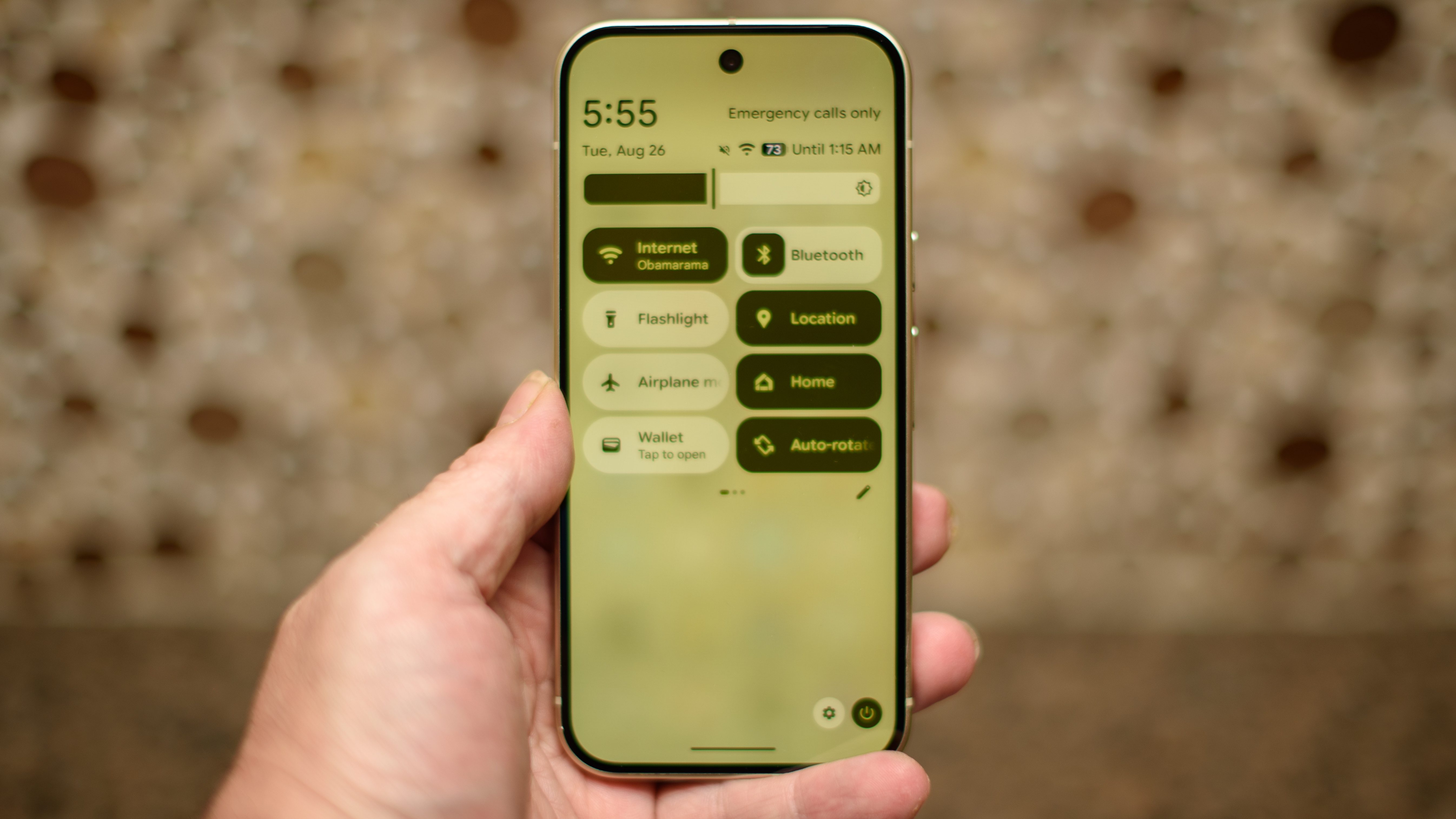
Of course, this isn’t the best Pixel you can buy this year; however, despite this being the cheapest handset in Google's lineup I'm disappointed that it misses out on so many of my favorite Pixel 10 Pro features.
Phone calls on the Pixel 10 Pro get some great AI assistance, like call screening for numbers you don’t recognize, and Call Notes that will transcribe notes during a call – great for talking to the doctor, or getting an athletic practice schedule over the phone. The Pixel 10 gets none of those features, which is troubling in more ways than one.
Sign up for breaking news, reviews, opinion, top tech deals, and more.
It's not just that I miss those features. What troubles me is the Pixel 10 is supposed to get seven years of major Android OS updates, but it’s already being left behind. If the Pixel 10 can’t even handle AI call-screening features like the Pixel 10 Pro, what happens in four years when my phone’s AI is even more amazing? How much farther behind will the Pixel 10 be?
If you like the Pixel 10, you’d be wise to hold off on buying if you can, because Google tends to drop the price of its base-model Pixel phone throughout the year. The Pixel 9 and Pixel 8 often saw discounts of $150-$300 in the US, and both spent about half of their first year on sale at a discounted price.
The Pixel 10 is a great phone with a unique look that's durable and functional, and it’s one of the easiest Android phones to use and enjoy. It takes great photos, and it has some (but not all) great AI features that make AI seem useful, not frightening.
The Pixel 10 Pro is the better phone to buy, not just for its better cameras but also because it already seems more future-proofed, but it’s much more expensive. If the Pixel 10 is on sale for a great price, I’d recommend buying it with confidence; but if you can swing the Pixel 10 Pro instead, that’s the phone that will pay off in the years to come.
Google Pixel 10 review: Price & availability
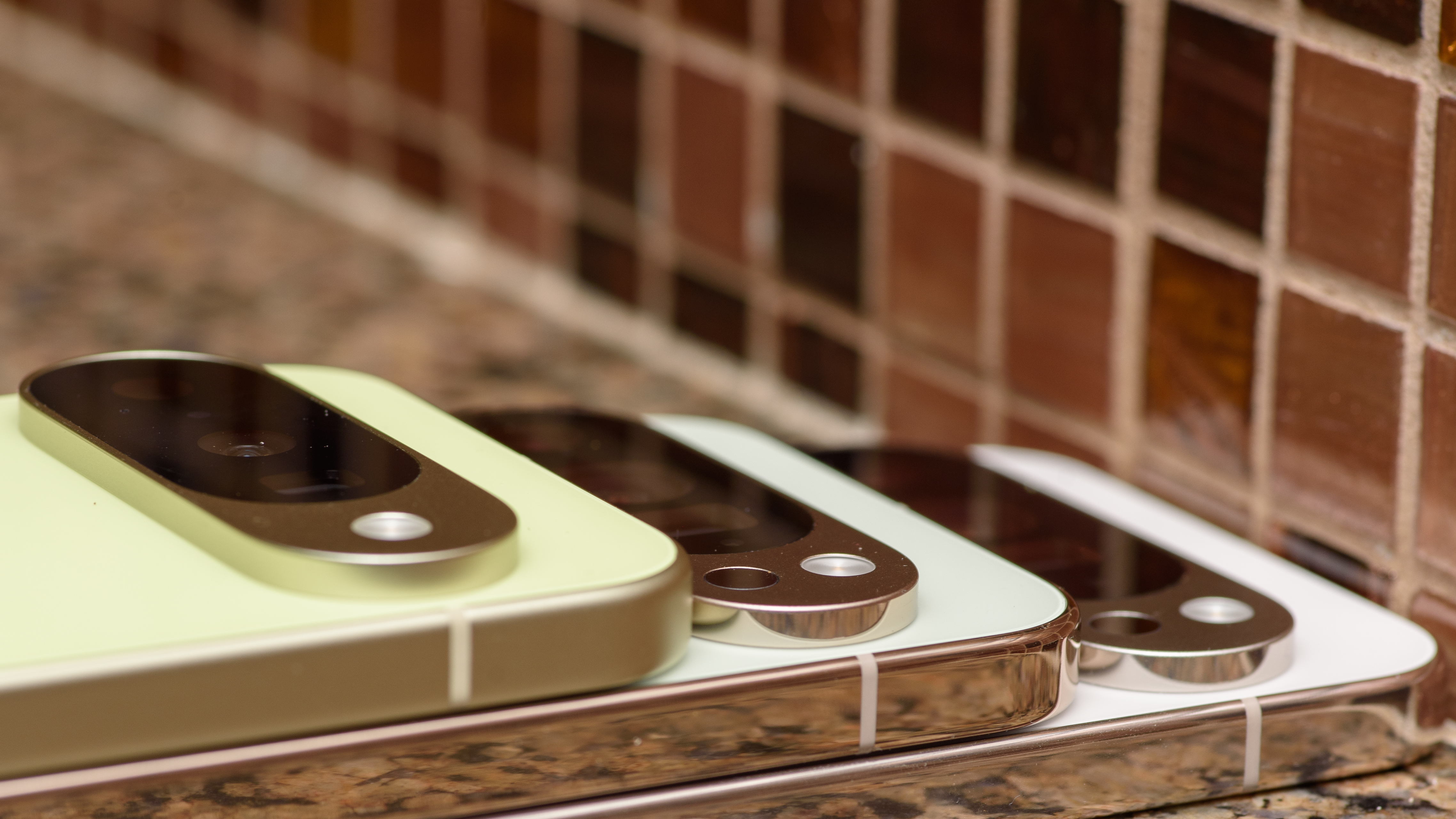
- Starts at $799 / £799 / AU$1,349 for 128GB and 12GB of RAM
- Bright colors include Indigo and Lemongrass, alongside black and white
The Pixel 10 starts at $799 / £799 / AU$1,349, which is the same price as last year’s model. That’s a relief, as phone prices have crept up this year. The phone still packs only 128GB of storage at this price, which is enough if you don’t load too many apps or games, and you keep your photos and videos stored in the cloud.
You can get the phone with 256GB of storage, though for only a bit more you can get the Pixel 10 Pro model, and that’s the upgrade you really want (unless you want bright colors, in which case I’d stick with the Lemongrass Pixel 10, like my review unit, or the Indigo color that most Googlers I met were carrying).
The Pixel 10 price is fine, but I like this phone better at a discount, and every Pixel phone before has dropped in price around the November US holiday shopping season. I wouldn’t be surprised to see a $150 discount later this year – so if you don’t need a phone immediately, you may want to wait.
Storage | US Price | UK Price | AU Price |
128GB | $799 | £799 | AU $1,349 |
256GB | $899 | £899 | AU $1,499 |
- Value score: 3 / 5
Google Pixel 10 review: Specifications
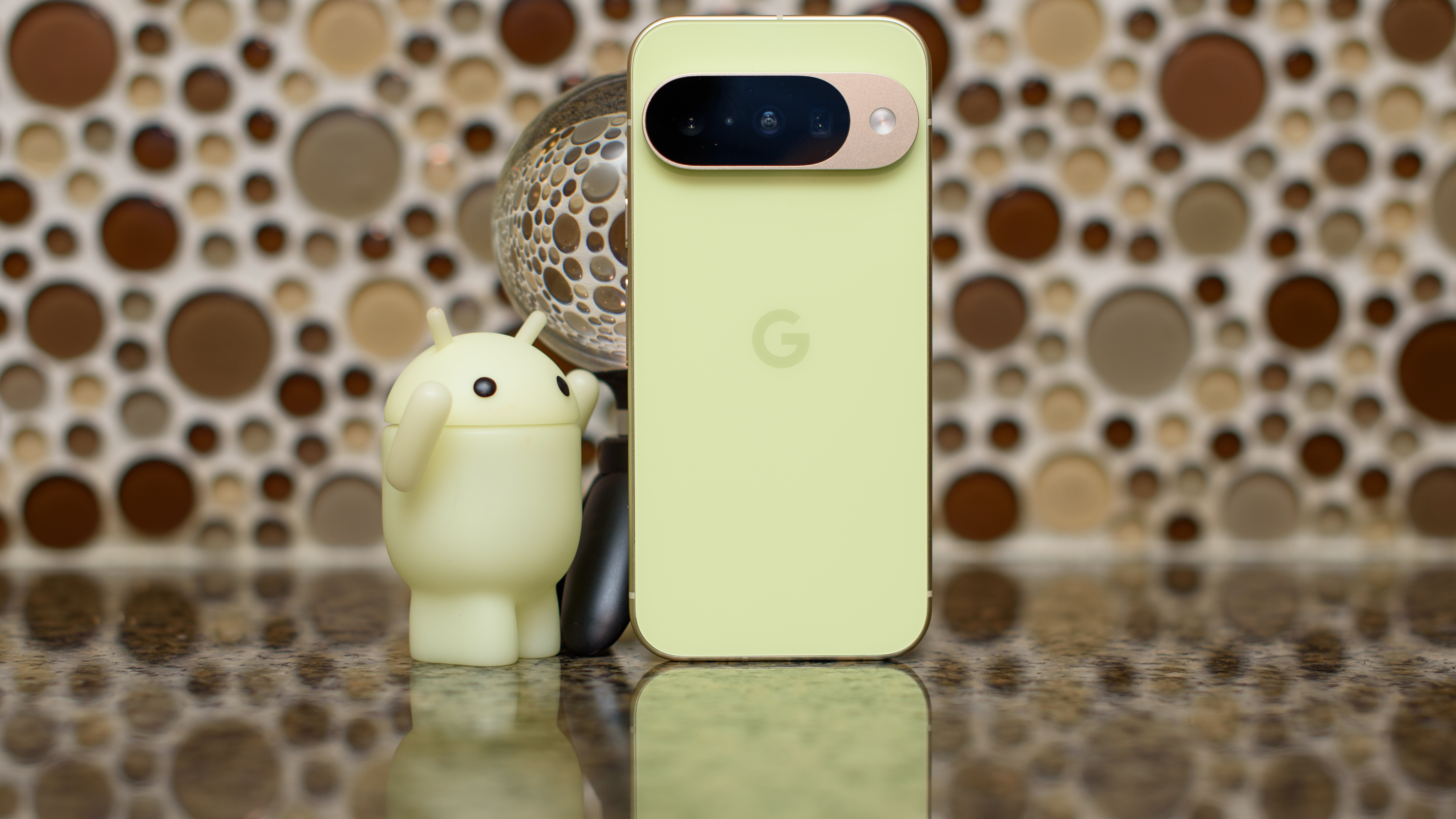
The Pixel 10 gets a big boost over last year’s Pixel 9 – on paper at least. The phone gets magnetic charging built-in with the new Pixelsnap feature. It has a larger battery than before, and it even gets a new camera, a telephoto option that you won’t find on the competing iPhone 16.
This year’s Pixel phone features a 5x zoom camera, a third lens in addition to the wide and ultra-wide cameras. Unfortunately, all of the cameras are shrunk a bit to make room, both in terms of megapixels and sensor size. In my experience, the photos were still very good, but if you want the absolute best Pixel photos get the Pro model.
Dimensions: | 152.8 x 72.0 x 8.6mm |
Weight: | 204g |
Display: | 6.3-inch Actua display |
Resolution: | 1080 x 2424 pixels |
Refresh rate: | 60-120Hz |
Peak brightness: | 3,000 nits |
Chipset: | Google Tensor G5 |
RAM: | 12GB |
Storage: | 128GB / 256GB |
OS: | Android 16 |
Wide camera: | 48MP; f/1.7; 0.5-inch sensor |
Ultrawide camera: | 13MP; f/2.2; 0.33-inch sensor |
Telephoto camera: | 10.8MP; f/3.1; 0.31-inch sensor |
Selfie camera: | 10.5MP; f/2.2 |
Battery: | 4,970mAh |
Charging: | 25W wired; 15W wireless Qi2 |
Colors: | Indigo, Frost, Lemongrass, Obsidian |
Google Pixel 10 review: Design
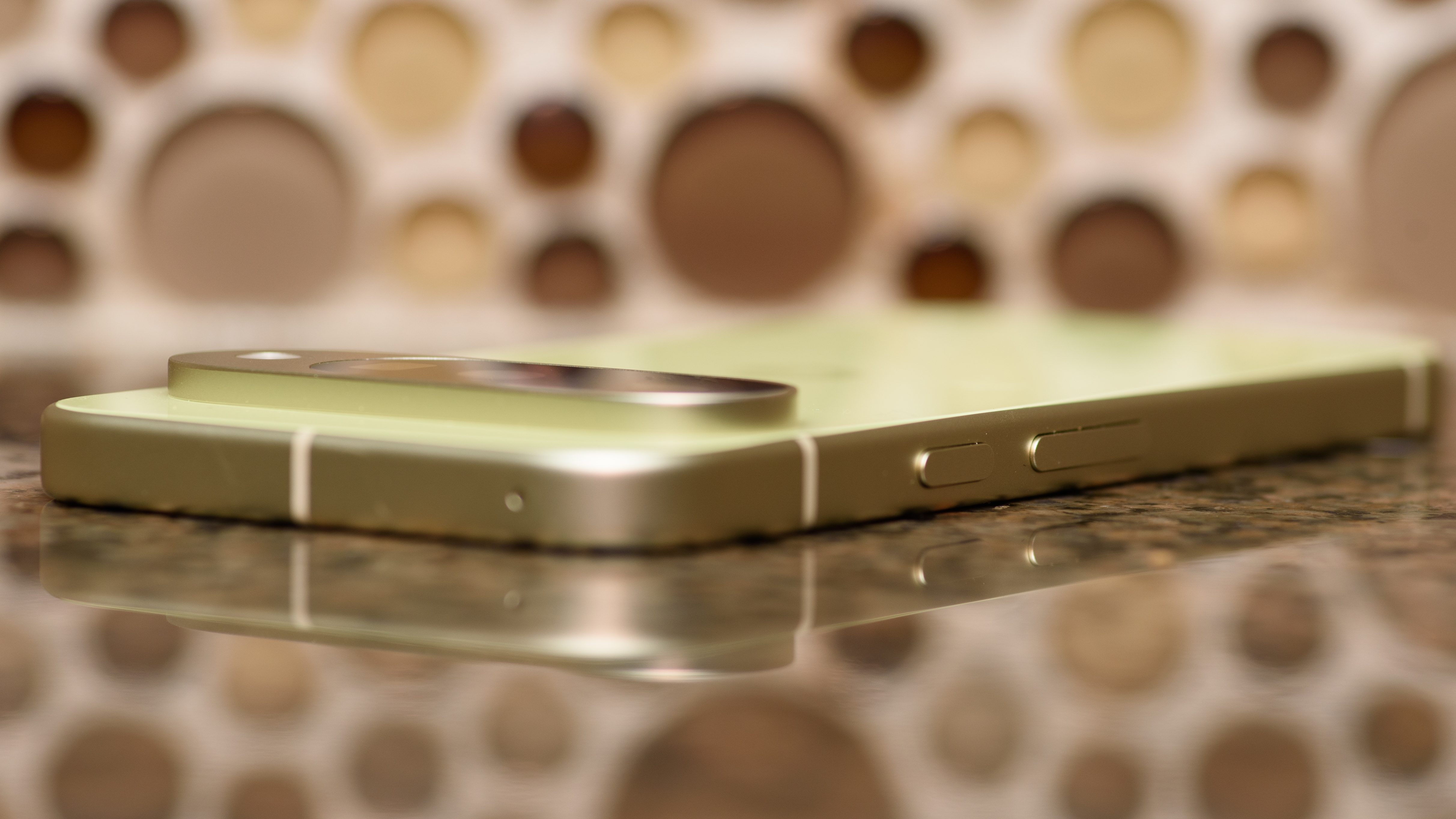
- Sleek and durable, just like last year’s Pixel 9
- Actually, it’s exactly the same as the Pixel 9 – and that’s good!
The Pixel 10 is a sleek, attractive phone that keeps the same design as last year’s model. Actually, it’s pretty much the same as last year’s Pixel 9 and this year’s Pixel 10 Pro – so close that you can use the same case for each of those phones. That’s not a problem – the Pixel 10 has a great design, and it’s one of the more appealing smartphones you could carry.
The biggest difference between last year’s model and the Pixel 10 are the magnets inside the new phone. You can’t see the magnets, and the Pixel 10 isn’t thicker, but you can feel them. Google has made its Pixelsnap feature with very strong magnets, and Googlers demonstrated the phone’s ability to hold fast to the various Pixelsnap accessories, even if you shake it around a bit.
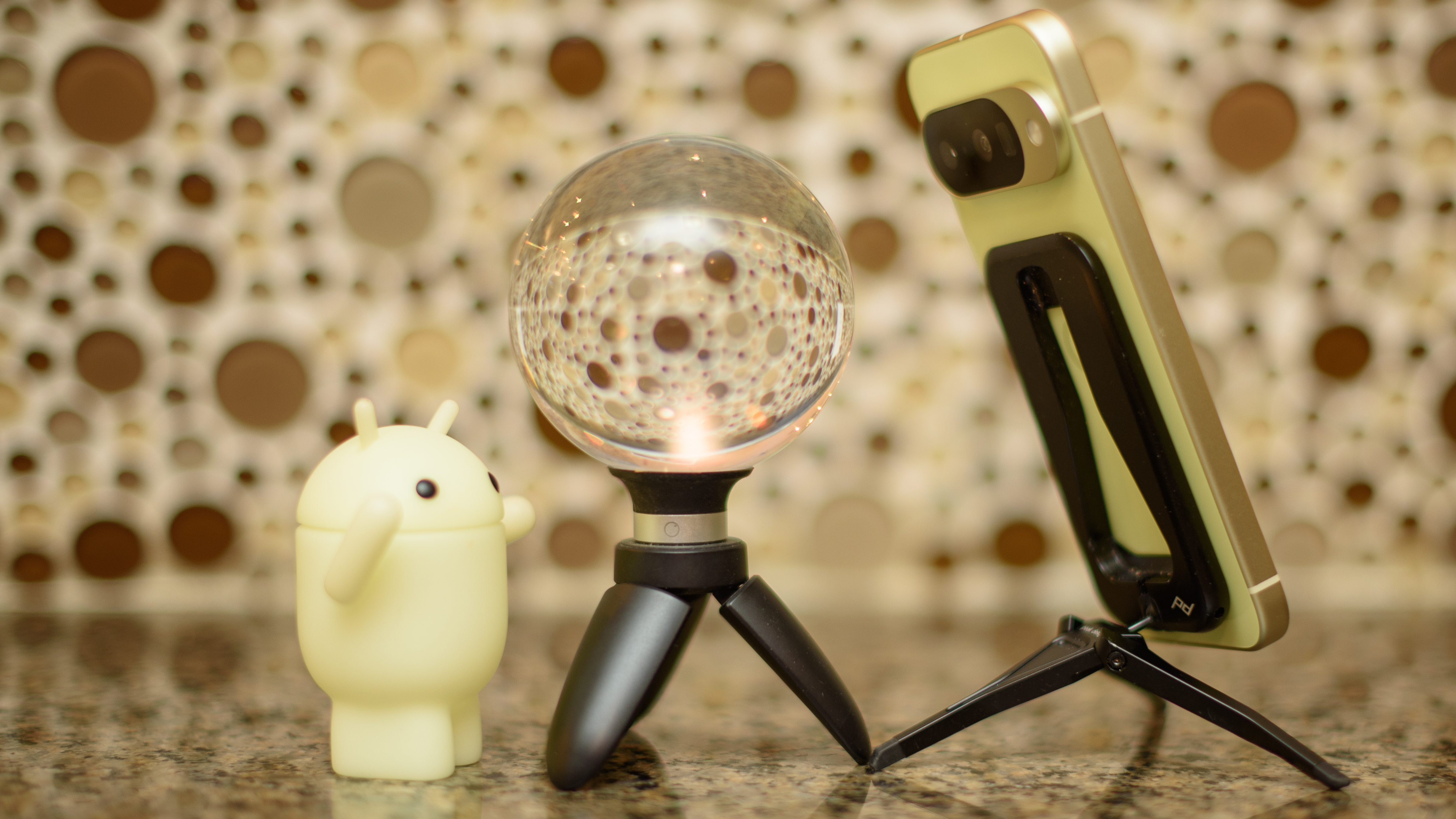
Surprisingly, the Pixel 10 isn’t thicker than the Pixel 9, but it did gain 6g of weight. It’s a heavy phone. The Pixel 10 is more than an ounce heavier than the iPhone 16, and an ounce-and-a-half heavier than the Galaxy S25.
The Pixel 10 also has a slightly larger display and a larger battery than the iPhone 16 or Galaxy S25, but the larger battery doesn’t equate to longer battery life, so I can’t give Google credit here.
Google will be marketing the bright blue Indigo color heavily, but I prefer the bright green Lemongrass, which was the color of my review sample. The Frost color is more of a very light blue than a white; kind of a friendlier version of the Pixel 10 Pro’s Moonstone color.
- Design score: 5 / 5
Google Pixel 10 review: Display
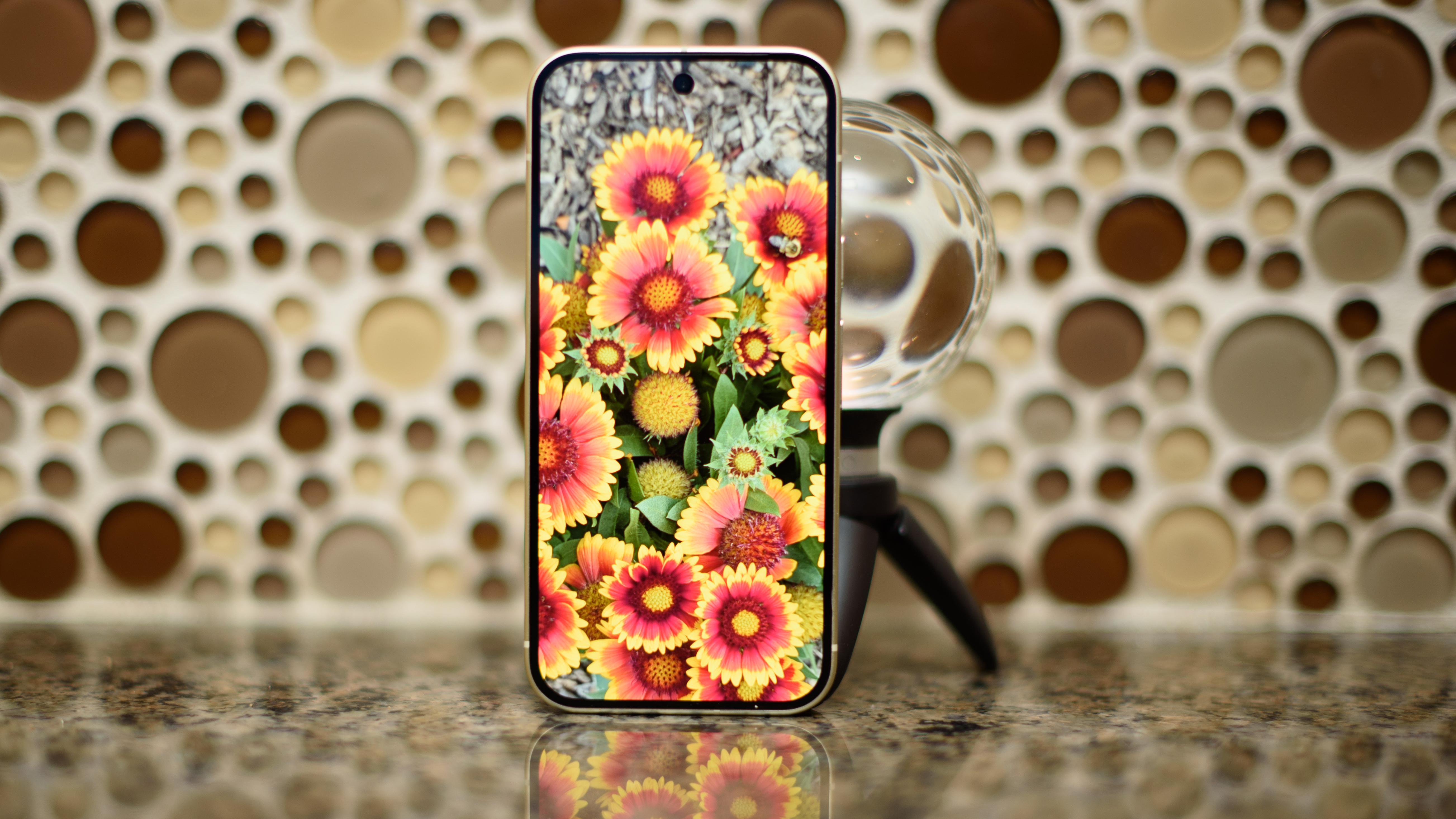
- Incredibly bright and very clear
- Not as sharp or colorful as the Pixel 10 Pro display
The Google Pixel 10 has a remarkable display, one of the brightest you’ll find on any smartphone today. In our Future Labs tests, the Pixel 10 was brighter by far than the iPhone 16 or Galaxy S25, and in my real-world time with the phone it was incredibly easy to read in every situation, especially when I was taking photos in bright outdoor sunshine.
Google’s Pixel displays have quietly taken the crown as the best screens you’ll find – at least on the day they're launched. Screens are getting brighter with every new phone, but for now Google’s Pixel 10 phones have the brightest, most pleasing displays you’ll see.
The Pixel 10 Pro does have an edge in our testing: it was more colorful than the Pixel 10, and it’s more sharp with a higher pixel density. The Pixel 10 is still no slouch, and the display is a standout feature on this phone. If you mostly read and watch videos with some gaming on the side, the Pixel 10 would be a great choice for you.
- Display score: 5 / 5
Google Pixel 10 review: Software
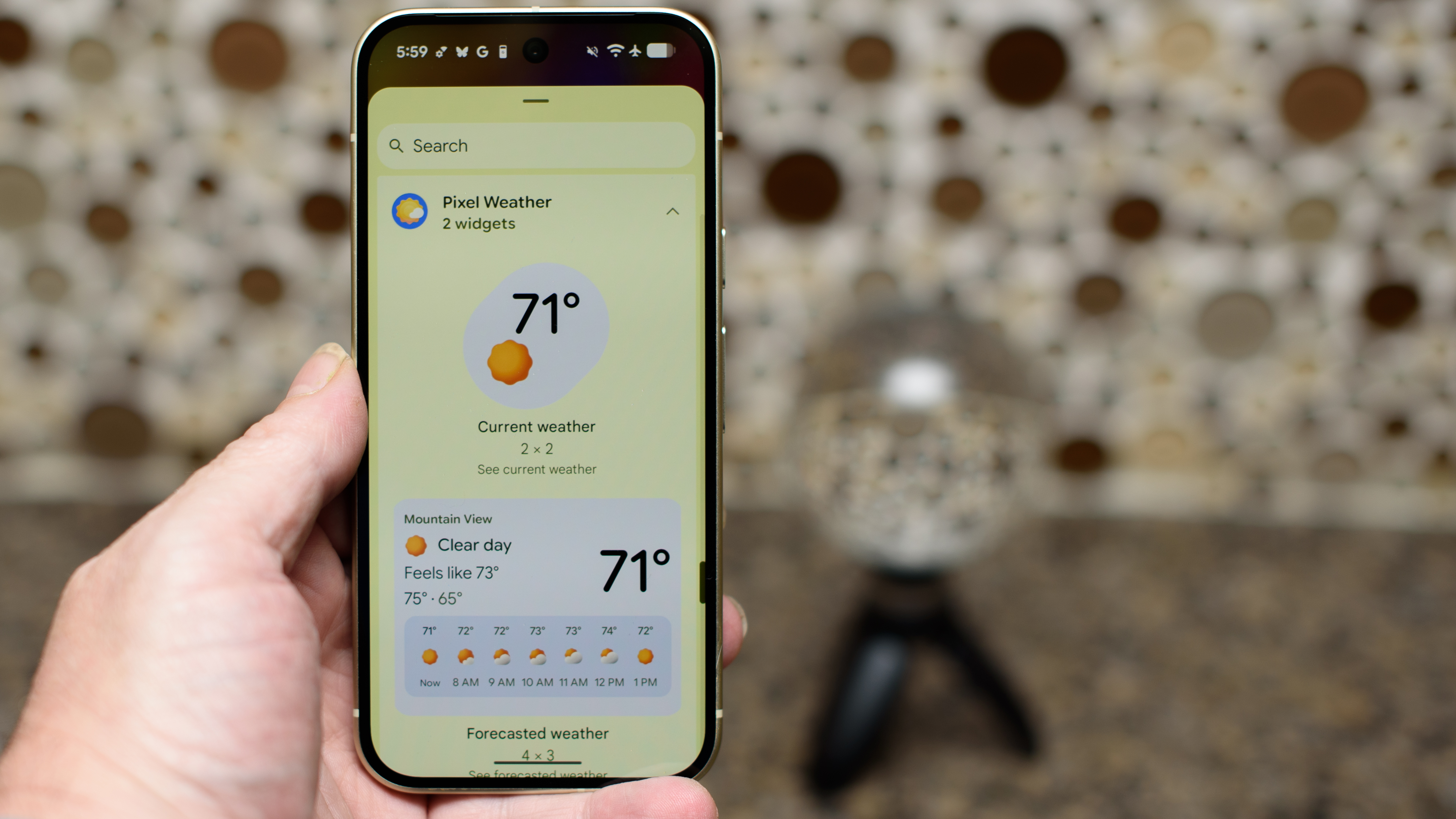
- New Magic Cue has promise, but isn’t fully baked
- Pixel 10 misses out on some important AI features
Software on the Pixel 10 isn’t just about AI, though there is more AI working on this phone than you might think. From the start, the latest Pixel 10 phones are about simplicity, and more elegance than you’d expect from an Android phone. Google has been improving Android for its phones, and unlike some competitors it hasn’t been afraid to remove useless features and unnecessary bloat to make the experience better (I’m looking at you, Samsung).
The home screens are easy to set up with app shortcuts and plenty of great-looking widgets. I love that Google’s widgets now color-coordinate to the theme of your phone, and can even change color to darker hues as the sun sets and night begins.
Settings menus are still a mess, with a jumble of disorganized features popping up in long lists of options. You can avoid most of it, but not every feature Google talks about is turned on from the start, so you might miss out on some AI tools if you don’t dig through the Settings menu, for better and for worse.
Every Pixel 10 phone gets the latest Google AI, of course, and that includes the fascinating new Magic Cue feature. When it comes to AI assistants, every phone maker starts with this same basic promise: the phone will now read your messages and listen to your conversations so that it can help you recall important information about your life.
Mostly these features have flopped. Apple ran advertisements for its version starring the actor Bella Thorne, then had to pull the ads because the features didn’t exist. Other phone makers like Motorola and OnePlus rely heavily on screenshots and other information gathering.
Google, with its access to your Gmail, your Google Calendar, and many other Google tools, has a unique advantage… as well as a unique challenge. Thankfully it doesn't read all of my Gmail. I think I’ve had my account for 20 years – that’s a lot of messages.
In practice, Magic Cue is kind of… charming? For an AI, at least. I’m used to AI features that are pushy and obtrusive – many of the Google Gemini features get in the way by constantly asking if I want to revise my email or ask questions about my own photographs. Magic Cue is quiet, almost anonymous. You may use it without knowing you’ve used an AI feature at all, and that should be the goal of every AI feature.
What can Magic Cue do? The list of things is growing, but you don’t have to do anything at all. Magic Cue will simply make suggestions in a small oval window in a place you can see them. They won’t be in the way. They will light up with a rainbow for a second or two, then they will sit quietly.
If a friend sends you a text message asking about a dinner reservation you made, it might offer you a button that opens the email you got from OpenTable, or a link to Google Maps where it will locate the restaurant’s address.
If your friend John wants to meet your friend Susan, Magic Cue will give you Susan’s phone number and contact card to send to John, if you wish. It will save you some steps.
In some ways, Google may have overpromised Magic Cue’s abilities. Google said it would offer relevant information about travel, but when I had a conversation about an upcoming trip, I got no suggestions from Magic Cue. I asked Google about this, and Magic Cue experts told me it only looks through a month or so of my email. My travel reservations were made three months back – perhaps if I forward the email from Vrbo.com back to myself, Magic Cue might pick it up again and start offering that information. We shall see.
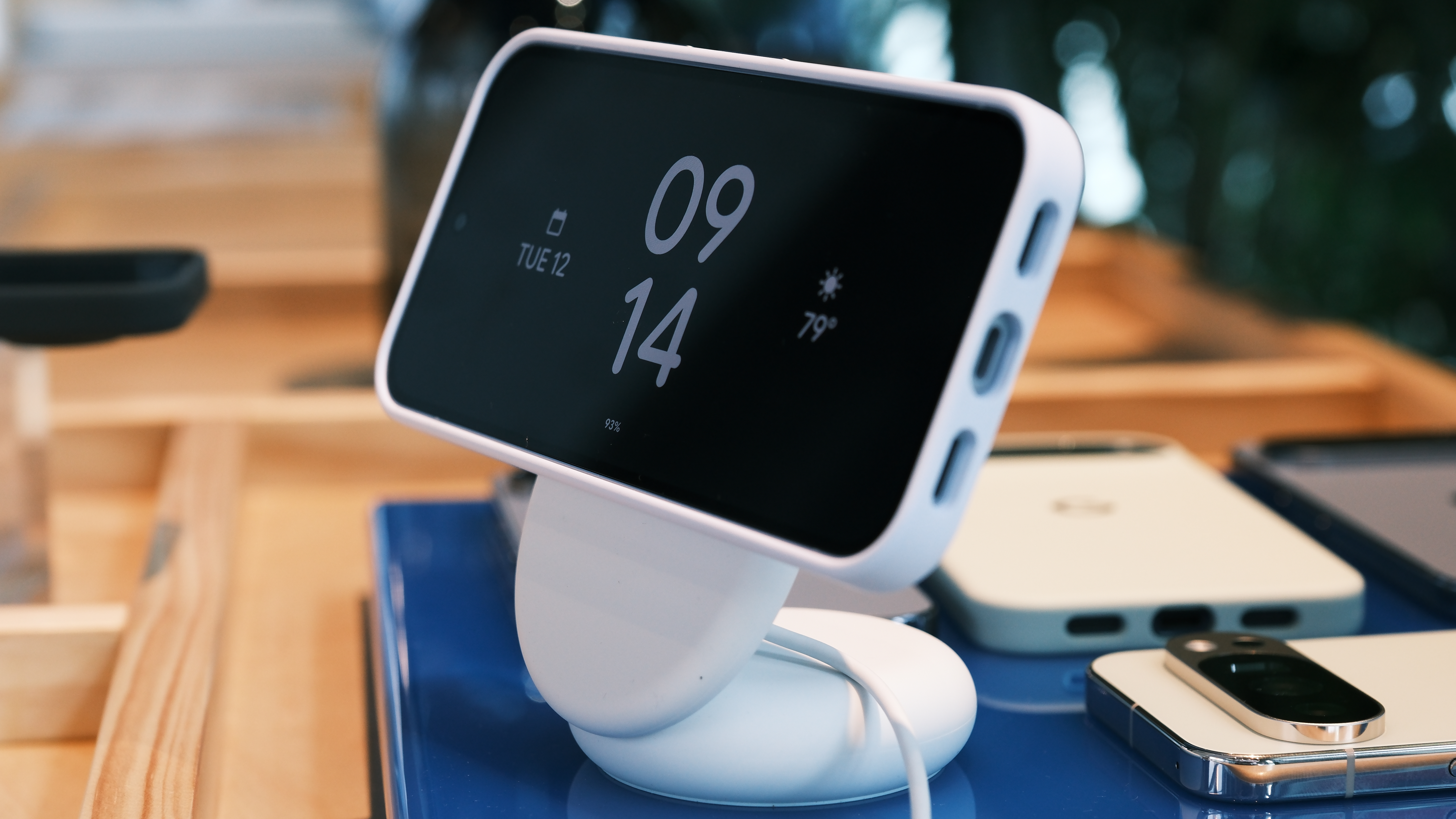
Even if it isn’t perfect, I’m not mad about it because it isn’t in the way. It isn’t rewriting my News headlines with fake news, or summarizing my notifications in hilariously inaccurate ways. It’s just giving me a button here or there that I can press to recall more information, or take a quick action that would normally involve opening a second app.
I expect Magic Cue's capabilities will expand dramatically, to the point where it will someday be a major part of the Android interface. My hope is that it will work so reliably well that I won’t ever need to know what it can do; I'll just assume that it will offer me the information I need and help with the actions I want to take.
Unfortunately, the Pixel 10 doesn’t get all of the software features that the Pixel 10 Pro and Pro XL phones can run. The biggest disappointment for me was losing all of my favorite calling features. I will often use my Pro Pixel to screen calls from numbers I don’t recognize, or take notes during important work conversations. The Pixel 10 Pro can also do these things, but the Pixel 10 cannot.
This has me worried. The Pixel 10 is scheduled to receive seven years of major Android OS updates and security patches. I’ve always wondered what those updates would look like – will the Pixel 10 still get the same version of Android as the Pixel 15? Or the Pixel 17? I worry about what features will be missing, and whether it will still be recognizable as Android.
The Pixel 10 has already been left out. It can use Magic Cue and the amazing new live translation features, but it can’t do everything. The Pixel 10 can’t listen to phone calls that might be a scam and warn you when it thinks you’re being conned. It can’t take notes during a call with my doctor.
These features don’t seem that advanced – so why can’t my Pixel 10 do these things? I worry about what it won’t be able to do in the future, and how Google’s seven-year promise might change over time.
- Software score: 4 / 5
Google Pixel 10 review: Cameras
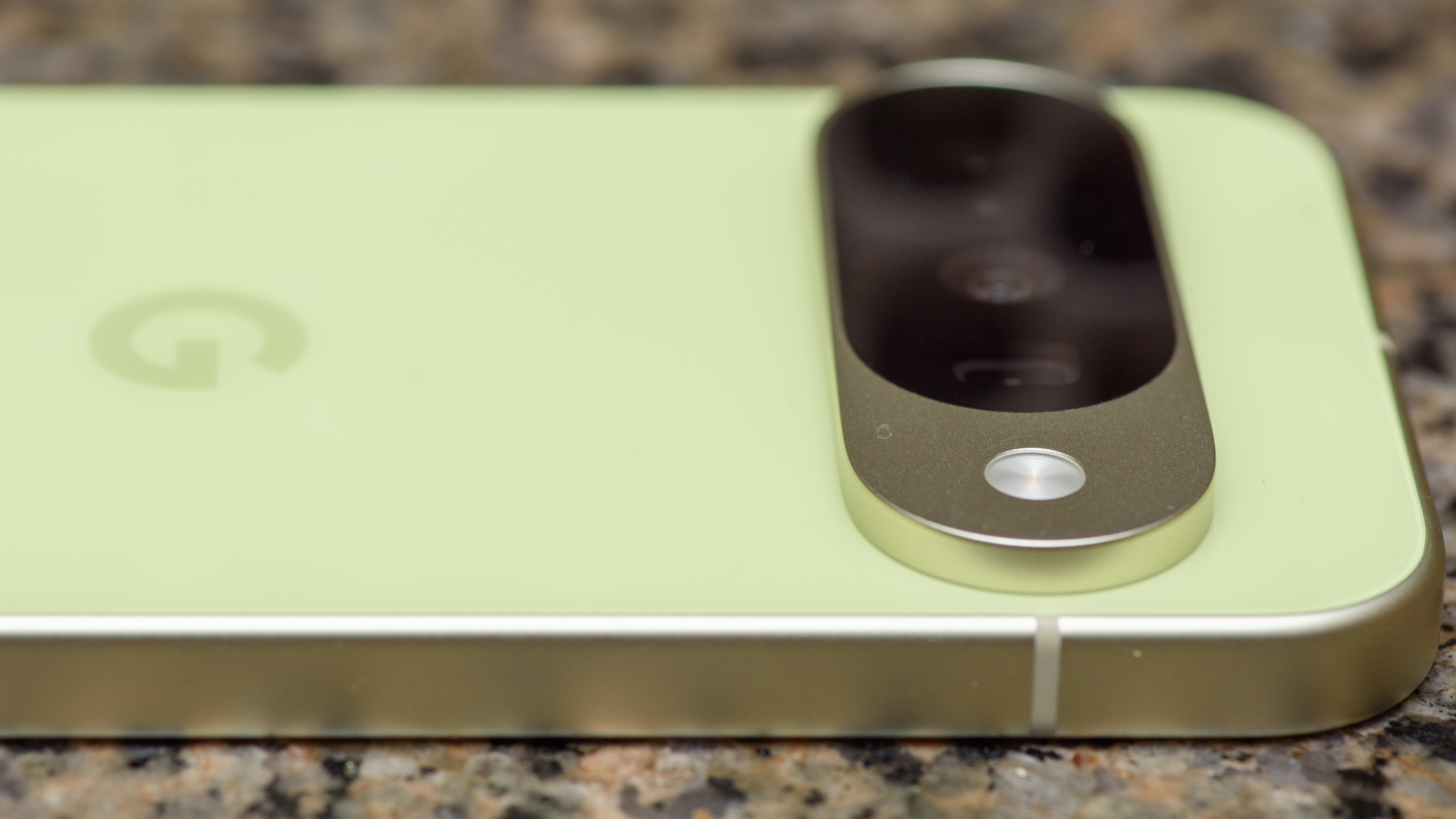
- Takes photos that look almost as good as those from the Pro Pixel phones
- Camera Coach offers useful tips… but where are they from?
The Pixel 10 isn’t the best camera phone of the new Pixel bunch, but you might not notice the difference. Google has done a great job of tuning its least-expensive Pixel so that it takes photos that look just like similar shots from the Pro models. You don’t get the same resolution, but the color and lighting on these photos looks remarkable, and nearly identical to the balance you’d get shooting with a Pixel 10 Pro.
There’s a fascinating new Camera Coach button in the Pixel 10’s camera app, in addition to an improved version of last year’s Add Me feature, which can add the photographer back into a group photo using some AI cut and paste tricks.
The Camera Coach is more passive than I expected. I thought it would interrupt my photography with useless AI tips, but that’s not what it does at all. When you line up your shot, if you press the Camera Coach button instead of the shutter button it will create a step-by-step process to help you improve your shot, and your photography in general.
First, it will suggest a theme for your scene. Take a photo of a flower and it might ask if you want a close-up on the flower’s details, or a photo that highlights the flower growing amongst the roadside clutter, or a photo that skips the flower and focuses on the blooming buds the AI noticed at the bottom of your frame.
Then it thinks for a few seconds, and soon suggests steps. Move your camera there. Aim up instead of down. Zoom in close, or get farther away. After four or five steps, it leaves you to take the photo… and that’s it. Then it goes away until you press the button next time.
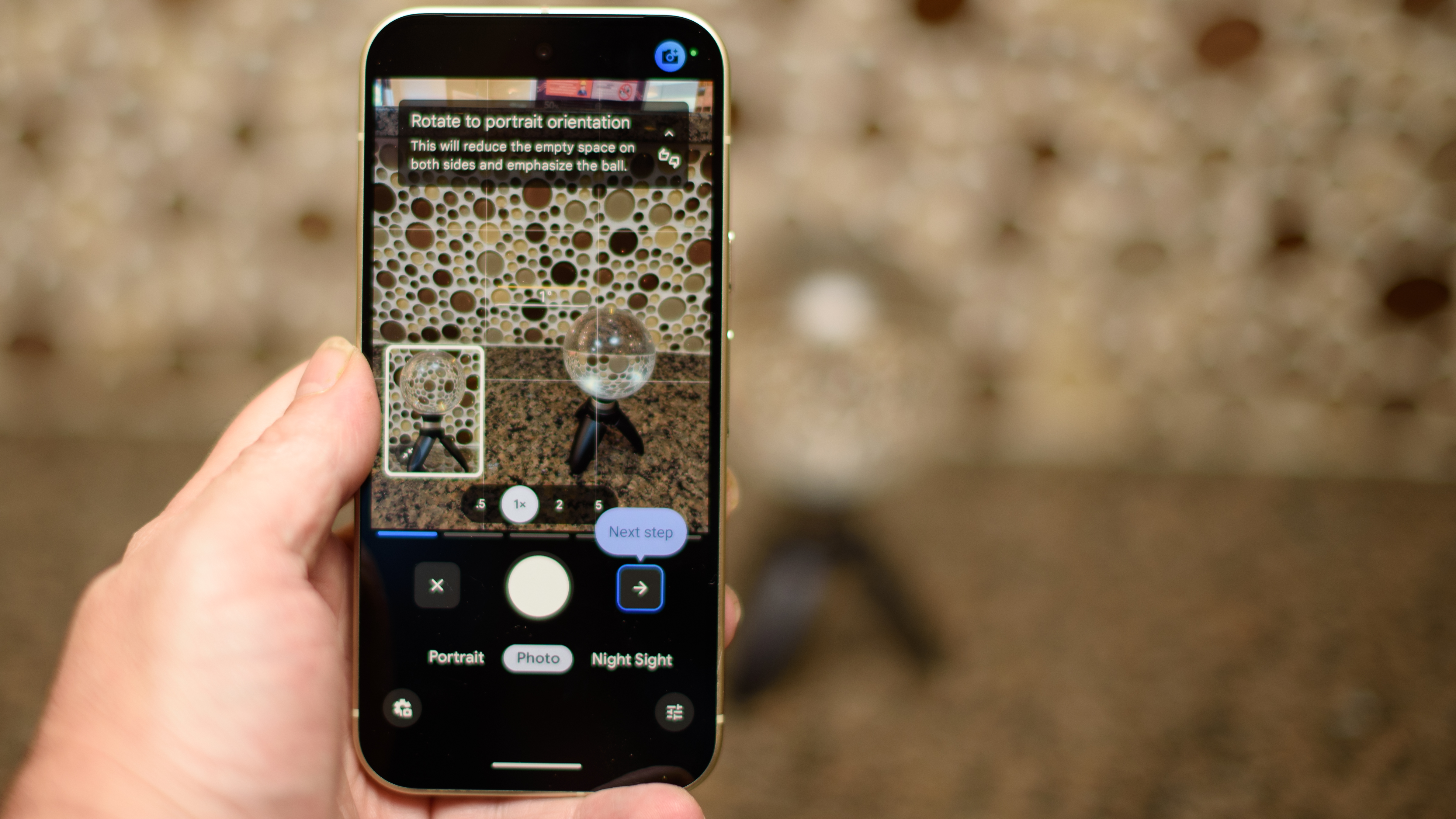
I actually liked the Camera Coach, but as with all generative AI features, I have to wonder about the cost. Sure, it might make interesting suggestions for framing, or teach me to use the zoom lens on my phone more often, but where did it learn those tips?
Camera Coach doesn’t offer links to its sources, and I have to wonder if experts at sites like TechRadar unwittingly fed their tips to a generative AI that's now being used to replace them. I could have read an article about taking better flower photos, but instead I let the Camera Coach tell me what to do, and the expert doesn’t get my clicks.
So I’ll pass on Camera Coach, but I won’t judge you for using it. It really does work, and it sometimes offers suggestions I hadn’t considered. I’ll bet our Cameras Editor considered them, though.
- Camera score: 4 / 5
Google Pixel 10 review: Camera samples







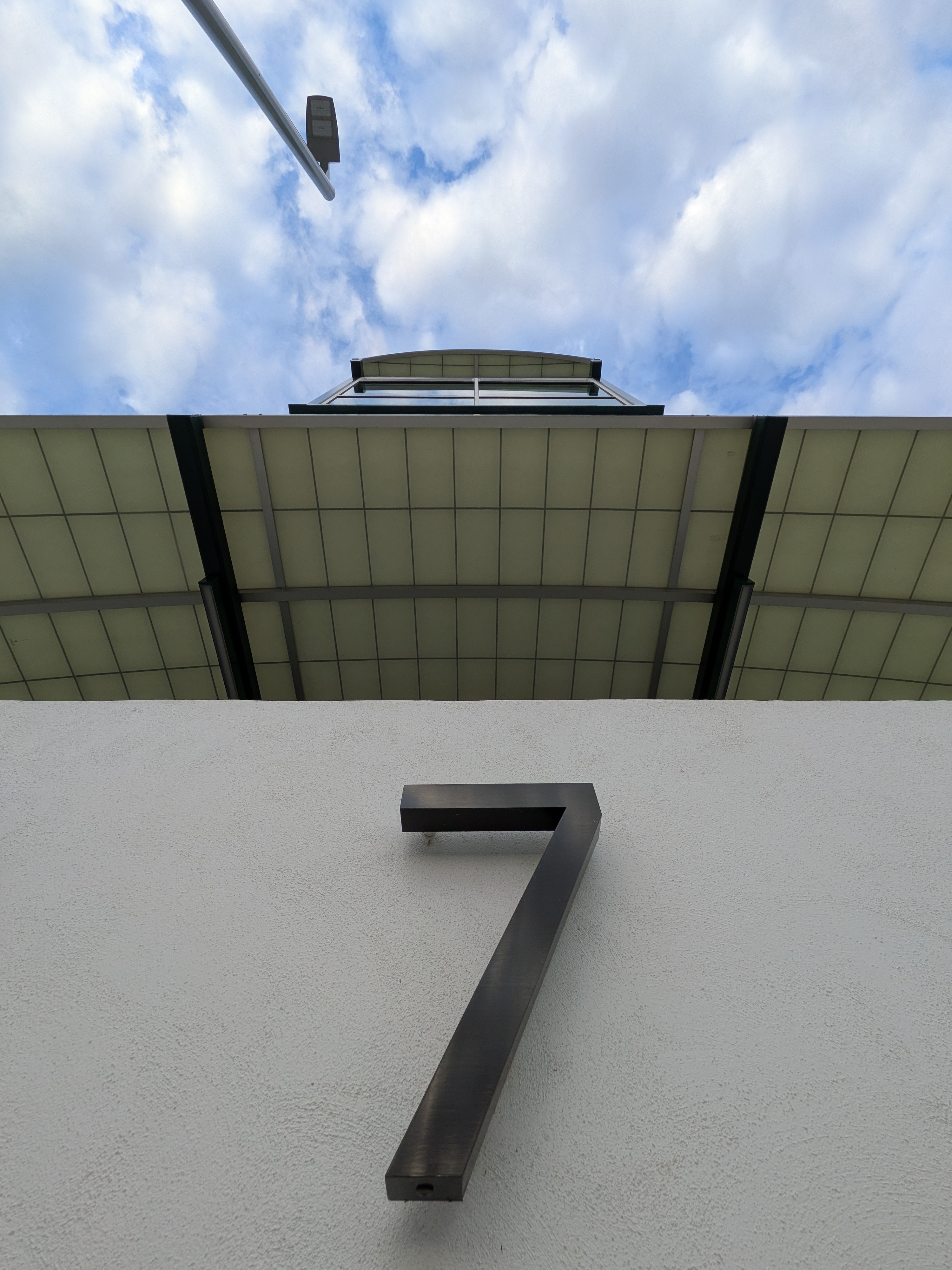
Google Pixel 10 review: Performance
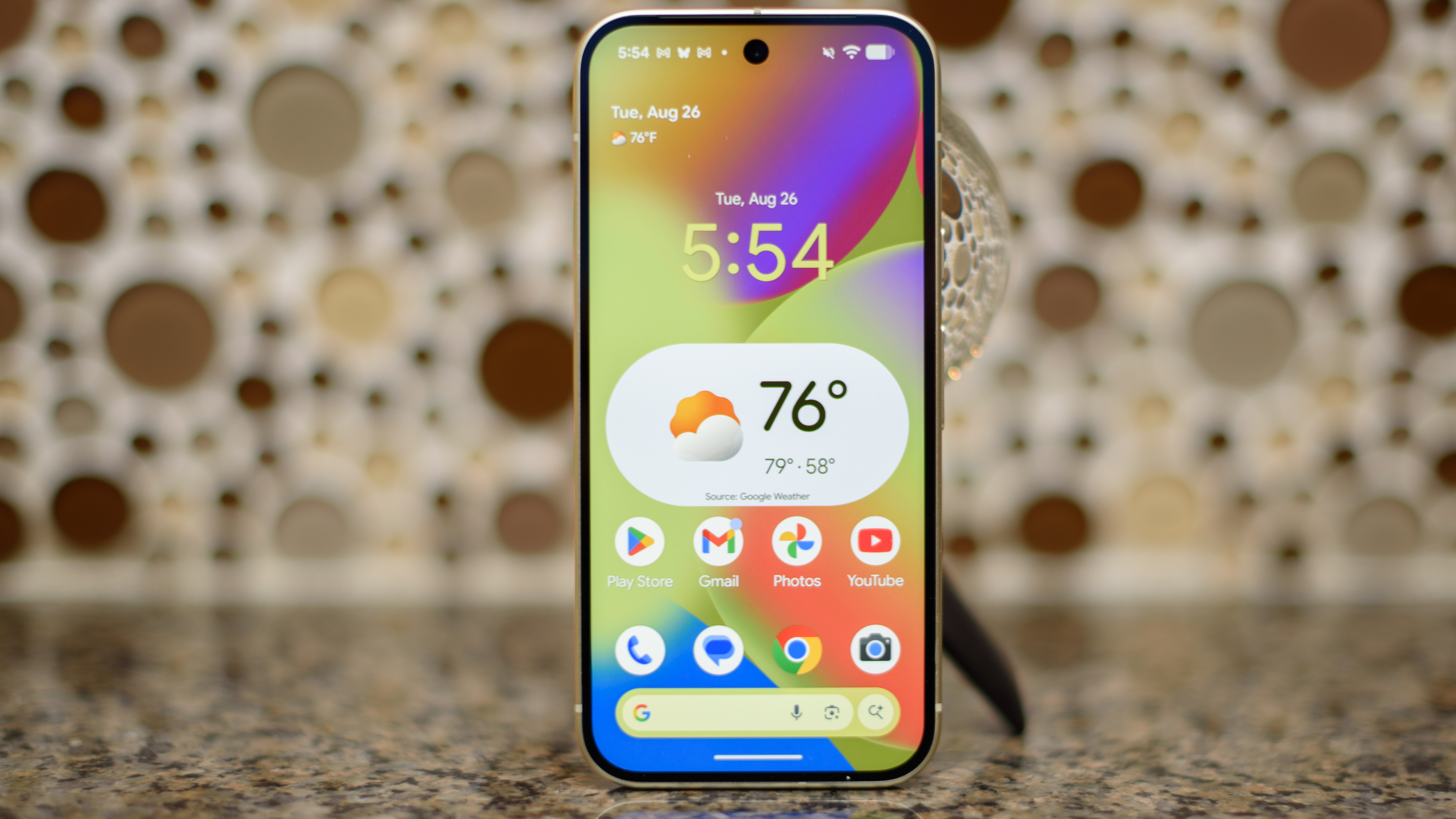
- Slow performance, on par with phones from a couple years back
- Not slower than the Pixel 10 Pro in our benchmarks
The Pixel 10 is a slow phone by benchmark standards, but most users will never notice. For daily tasks and navigating the phone’s menus, it felt plenty fast to me, even zippy. It opened apps quickly, and the menus and home screens flashed by as I swiped through them.
There was some slowdown when playing intense games that require a lot of graphics or processing power. The Pixel 10 stutters if you try to play Call of Duty Mobile with all of the performance settings maxed out, or if you run through Vampire Survivors with hundreds of enemies on the screen at once. If you don’t play a lot of games, I promise you won’t notice any performance problems.
Google’s AI features load more snappily on this phone than on previous ones, and that’s probably because the Pixel 10 is running many more machine-learning models on the device itself – using Google's Tensor G5 platform – than we’ve seen on previous Pixels. The more the phone can rely on its own power instead of tapping the cloud for help, the faster the phone will feel.
Strangely, the Pixel 10 Pro and Pixel 10 Pro XL did not outperform the Pixel 10 in our benchmark tests, even though they have 16GB of RAM instead of 12GB, and they use a faster storage technology. In some cases, the Pixel 10 was actually faster than both of those phones. There are other tangible benefits to buying the Pro models, but it makes me wonder why Google held back great features, like the call-screening tools that I use every time I get a spam call, from the Pixel 10.
Too many AI features are only available on the Pixel 10 Pro, even though benchmarks suggest that the Pro model has no apparent benefit… yet. That extra RAM may come in much more handy over the next seven years of software updates as more AI features are added – so if you care about the longest long term, you may want to go Pro instead of buying the Pixel 10.
- Performance score: 3 / 5
Google Pixel 10 review: Battery
- Battery life is fine, but not excellent
- Qi2 is very convenient for keeping the phone charged
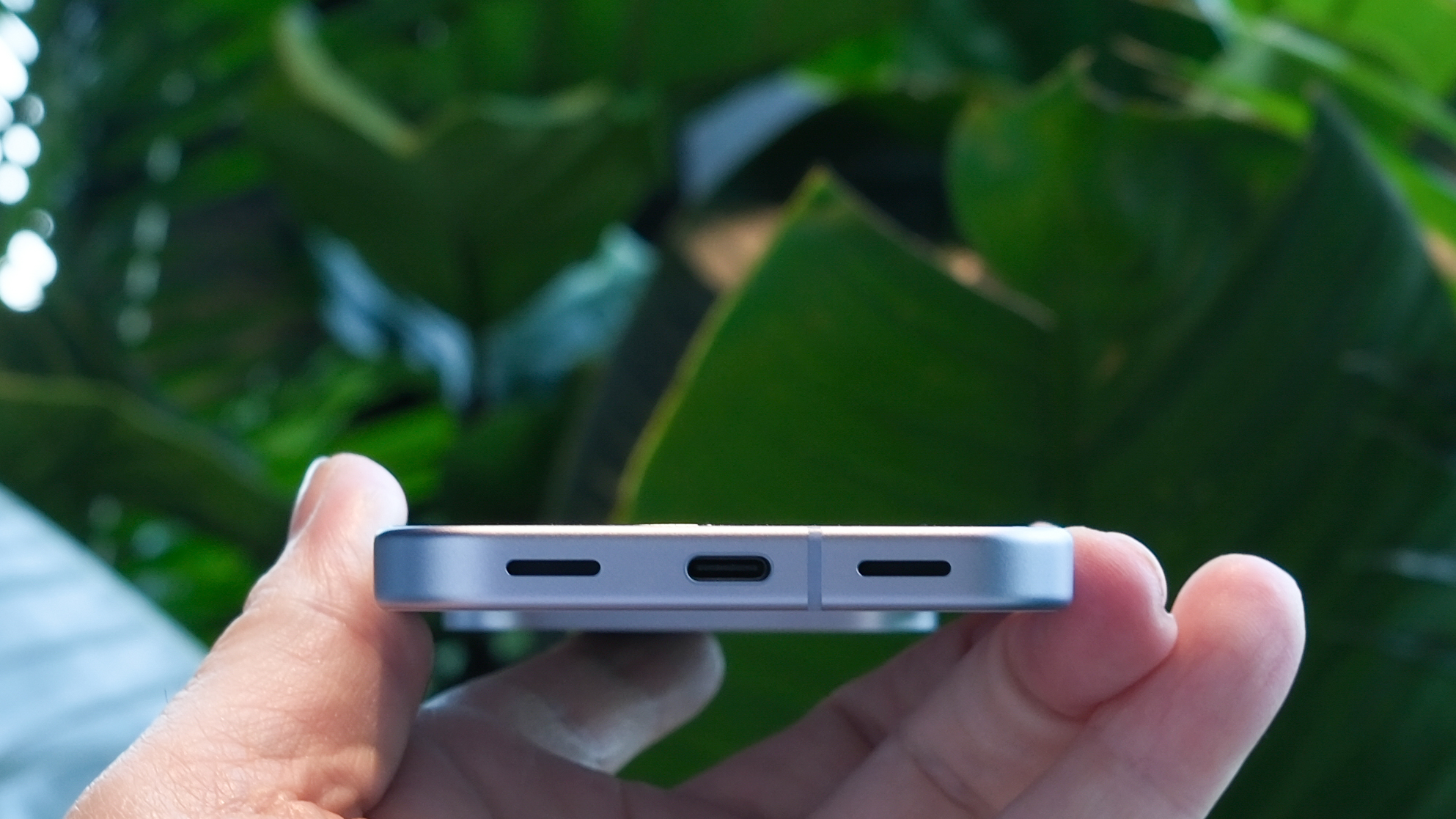
If you buy a Pixel 10, do yourself a favor and get a magnetic Qi2 (or MagSafe) charging stand. It’s so easy to simply pop your phone on and off a magnetic stand that you’ll make a habit of it, and you won’t worry about the disappointing battery life or slower charging speeds you might otherwise experience.
The Pixel 10 battery life is fine – it usually lasted through a full day of testing, unless I was hitting the Camera app extra hard. Excessive AI use didn’t seem to drain the phone any faster than normal.
In our Future Labs tests, the Pixel 10 was about average, but other recent Android phones have been exceptional. Every phone with the Qualcomm Snapdragon 8 Elite chipset inside has lasted hours longer than the generation before, while the Pixel 10 shows no improvement over last year’s Pixel 9.
In Future Labs tests, the Pixel 10 lasted around 13 hours and 15 minutes, which was a few minutes less than the Pixel 9 managed. The Samsung Galaxy S25, which has a smaller battery inside, lasted two hours longer than the Pixel 10. At least the Pixel 10 beat the iPhone 16 by over an hour, because the iPhone has a much smaller battery inside.
Why do iPhone fans accept paltry battery life? Because MagSafe makes it easy to top off your phone throughout the day and forget about long charging sessions. You don’t need to worry about how long the battery lasts if you charge it for 15 minutes twice a day – you’ll have more than enough power to last.
- Battery score: 3 / 5
Should you buy the Google Pixel 10?
Value | The Pixel 10 isn’t bad value, but Google has a strong history of discounting its Pixel phone around the US holidays, so maybe wait for the best deal. The Pixel 9 was discounted for half of its first year. | 3/5 |
Design | Not much has changed since the Pixel 9, and that’s a good thing because the Pixel design is stellar. The brighter Indigo and Lemongrass colors are especially appealing. Hidden magnets add weight but not thickness. | 5/5 |
Display | One of the best smartphone displays you’ll see (until you see the Pixel 10 Pro). This screen is very bright and sharp, and a joy to use. Google should brag more about its screens. | 5/5 |
Software | The interface design is crisp and colorful without looking silly, and many of the latest AI features are actually useful without being annoying. Watch out, Apple – Google is delivering on software promises the iPhone couldn’t keep. | 5/5 |
Cameras | The Pixel 10 isn’t the best Pixel camera, but it takes photos that could have come from a Pro model (if you don’t zoom in too close). Camera Coach offers a unique and helpful tool, but I worry it’s putting experts out of work. | 4/5 |
Performance | Not a top performer, though the Pixel 10 does all the Pixel stuff very quickly. The interface and features are super-snappy, but don’t expect to dominate mobile games that require a heavy graphics load. | 3/5 |
Battery | Battery life should be much better – there’s no improvement over the Pixel 9. Thankfully, Pixelsnap (and MagSafe) charging make a big difference and will help you keep this phone powered up all day and then some. | 3/5 |
Buy it if...
You liked the Pixel 9 but wish it were more iPhone-y
With magnetic charging and its sleek, simple interface, the Pixel 10 should be the first stop for iPhone switchers
You see it discounted
The Pixel 10 is competitive at this price, but Google often gives its base-model Pixel phones strong discounts throughout the year – we’ll keep you posted if we see a good deal.
You want Pixel cameras for less money
The Pixel 10 doesn’t have the resolution of the Pro Pixel cameras, but it takes photos that look very similar to shots the Pro phones take.
Don't buy it if...
You can afford the Pixel 10 Pro instead
The Pixel 10 Pro is a big step up, and not just in terms of camera hardware. It gets some very useful AI features that the Pixel 10 lacks.
You have a Pixel 9 already
The differences between last year’s model and the Pixel 10 are minor, and you can copy the magnet features with a magnetic case.
You play a lot of hardcore mobile games
I didn’t have a big problem with the Pixel 10’s lackluster performance, but if you’re looking for the top performer, keep looking.
Also consider...
Apple iPhone 16
The iPhone 16 is about to be superseded, but it's still a great iPhone, with all the best iOS 26 features coming.
Read our in-depth Apple iPhone 16 review
Samsung Galaxy S25
The Galaxy S25 gets better battery life and performs faster than the Pixel 10, so if you want a gaming powerhouse, I’d check out Samsung’s latest.
Read our in-depth Samsung Galaxy S25 review
| Row 0 - Cell 0 | Google Pixel 10 | Apple iPhone 16 | Samsung Galaxy S25 |
Price | $799 / £799 / AU$1,349 | $799 / £799 / AU$1,399 | $799 / £799 / AU$1,399 |
Display | 6.3-inch Actua display | 6.1-inch Super Retina display | 6.2-inch Dynamic AMOLED 2X display |
Cameras | 48MP wide, 10.8MP 5x zoom, 13MP ultra-wide | 48MP wide, 12MP ultra-wide | 50MP wide, 10MP 3x zoom, 12MP ultra-wide |
Battery Results (HH:MM:SS) | 13:13:01 | 12:13:28 | 15:22:06 |
How I tested the Google Pixel 10
I tested the Google Pixel 10 for a week, alongside the Pixel 10 Pro and Pixel 10 Pro XL. I used the Pixel 10 as my primary work phone for half of that time, and as a backup phone and camera for the remainder. I loaded the phone with more than a hundred apps, and multiple Google accounts.
I used the Pixel 10 as a camera, testing every photography feature. I used AI features to ask questions and generate sample images. I connected Magic Cue to all of my personal Google account information, and I fed the Pixel 10 a regular diet of screenshots of all of my personal dealings for the Screenshots app.
I connected the Pixel 10 to my Pixel Watch 3, my Pixel Buds Pro, and various other Bluetooth headsets and devices. I used Android Auto in my Kia and my friends’ Acura and Subaru cars, and connected to Bluetooth in an older BMW.
I've been testing phones for more than 20 years, since the days of BlackBerry and Palm OS smartphones and Samsung flip phones. I've tested hundreds of devices myself, and our Future Labs experts have tested hundreds more.
Future Labs tests phones using a mix of third-party benchmark software and proprietary, real-world tests. We use Geekbench, CrossMark, JetStream, WebXPRT and Mobile XPRT, and 3DMark for performance testing. We test a phone's performance on video editing tasks using Adobe Premiere Rush. We also measure display color output and brightness.
For battery testing, we have proprietary rundown tests that are the same for every phone, which we use to determine how long it takes for the battery to run down.
First reviewed August 2025

Starting more than 20 years ago at eTown.com. Philip Berne has written for Engadget, The Verge, PC Mag, Digital Trends, Slashgear, TechRadar, AndroidCentral, and was Editor-in-Chief of the sadly-defunct infoSync. Phil holds an entirely useful M.A. in Cultural Theory from Carnegie Mellon University. He sang in numerous college a cappella groups.
Phil did a stint at Samsung Mobile, leading reviews for the PR team and writing crisis communications until he left in 2017. He worked at an Apple Store near Boston, MA, at the height of iPod popularity. Phil is certified in Google AI Essentials. His passion is the democratizing power of mobile technology. Before AI came along he was totally sure the next big thing would be something we wear on our faces.
You must confirm your public display name before commenting
Please logout and then login again, you will then be prompted to enter your display name.
